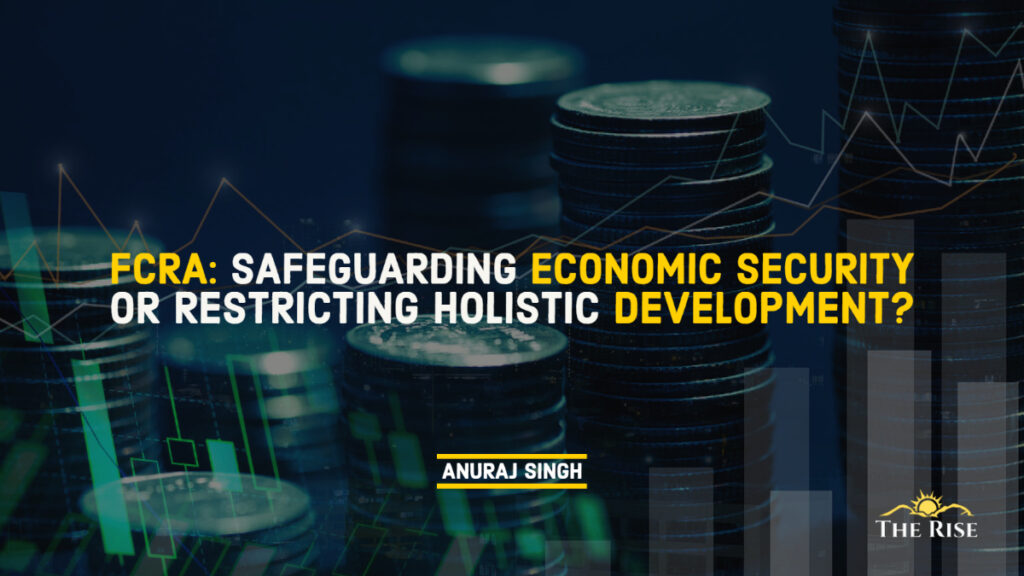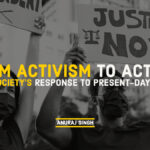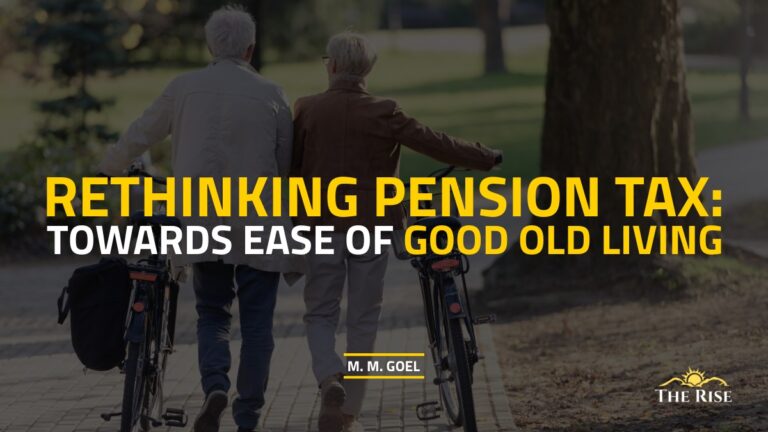This review of the Foreign Contributions Regulation Act (FCRA) in India presents certain facts starting from its evolution in 1976, civil society reactions to the FCRA and possible solutions to the problems it has created in relation to contemporary Indian civil society organizations (CSOs). There are basic problems which the FCRA has disproportionately created and assumed. The first one is they have ended up targeting queer and LGBTQ+ -based CSOs which rely heavily on external funding mainly due to the lack of funds dedicated to such groups in India. Second, environmental groups or animal rights groups operating on a pan-India scale also get disproportionately affected due to such regulations.
The Foreign Contributions Regulation Act 1976 (FCRA) is a way the Indian government seeks to regulate and control foreign funding of Civil Society Organisations (CSOs). This was the brainchild of Prime Minister Indira Gandhi who had suspicions of external nation-states being involved in the ongoing protests happening around the country. The FCRA however, has since evolved to maintain strict control over voluntary organisations and political associations which receive foreign funding. In 1984, an amendment was made to the act requiring all Non-Governmental Organisations (NGOs) to register themselves with the Home Ministry.
An IB report in 2015 to the PMO regarding an immediate requirement to tighten FCRA regulations did not help the situation, as it suggested that NGOs with Foreign Contributions were actively involved in slowing down many projects in India. These allegedly were a risk to India’s “economic security”, and amounted to a slowdown of almost 2-3% annual GDP per year. This is an unfair conclusion to draw from data as it attacked prominent CSOs such as Greenpeace India and the Ford Foundation, the former being an environmental NGO.
This was inherently flawed as the project which the environmentalists or CSOs seek to stop are not necessarily developmental for the Indian state in the long run as they are not sustainable. A case in point is the POSCO steel plant which was a 12 billion USD investment being made in Odisha in the early 2000s. People internationally protested against the steel plant because a small group of villagers in the district drew attention from UN-proclaimed Human rights activists and gave birth to now prominent names like Prafulla Samantra from India. The standoff ended with the South-Korean company being forced to leave India. This might have been a ‘jerk’ to the Odisha economy, but this move protected one of the world’s few nesting areas of the Olive Ridley Turtle which is under Schedule 1 of the Wildlife Protection Act, 1972. There are many such instances where environmentalists pan-India try to stop similar acts against nature from happening. Sadly, they are not always successful. Blocking off funds for such groups is going to be catastrophic for India even at an economic level, as we see China facing one of the world’s highest environmental costs which came at the hands of such rapid development causing irreversible damage to habitats and driving species into local extinction looking at them just from an environmental aspect.
FCRA is a way the Indian government seeks to regulate and control foreign funding of Civil Society Organizations.
Also Read: Changing Paradigm of BRICS: Growing Global Clout or Just an ‘Anti-West’ Platform?
Amending FCRA: Restricting funds flow
The FCRA was enacted in 1976, in the 42nd Amendment to the Indian Constitution under the Indira Gandhi government. Its next major amendment was in 2010 under the Manmohan Singh Government. One of the most prominent changes in the 2010 amendment was that it shifted the FCRA registration which used to be lifelong to a period of 5 years only, with a cap at 50% of administrative expenditure. Its scope is to regulate the acceptance and utilisation of foreign contributions or foreign hospitality by certain individuals or associations or companies and to prohibit the acceptance and utilisation of foreign contributions or foreign hospitality for any activities detrimental to the national interest. This limited the scope of the NGOs by many folds.
But the above-mentioned IB Report encouraged the Modi government to bring about yet another amendment in 2020. The Government claims the amendment seeks to bring about a level of accountability to these CSOs receiving foreign funds, by making the entire system more transparent and under public scrutiny. This could not be further from the truth as it has reduced administrative funding by less than half the previous cap, falling from 50% to 20% for administrative funding and allowing to use the money for the purpose it was sent/tagged, making it like the domestic Conditional Cash Transfers the Center pushes for at a domestic level to the local bodies. The 2020 Amendment also reduces the years of registration to three years and limits the transfers only to the SBI where they could make transfers to one bank specifically. As opposed to 1985, the original FCRA was amended to ensure that NGOs received their foreign contribution only in one bank account, which was noted in MHA records. Depositing foreign contributions in any other account could lead to severe penalties. A few updates like being the holder of an Aadhar Card to be able to receive funds were also added.
India has had a rich culture of philanthropy, with some of its premier institutions being built from foreign funding.
Restricting funds: Hampering holistic development?
India has had a rich culture of philanthropy, with some of its premier institutions being built because of CSOs foreign funding. IIM Ahmedabad, India’s foremost school on management, was set up because of contributions made by the Ford Foundation in 1961. Even in recent years, there has been a jump in daily citizenry donating small amounts of money for social causes most prominently during the COVID pandemic or the Uttarakhand floods of 2013. Billionaires like Azim Premji make massive contributions on a regular basis. However, even these things are at risk with the new regulations. NGOs can be put out by the MHA (Ministry of Home Affairs) as now they come under three audits – the Societies Registrations Act of 1860, the FCRA 1976 and an Audit of the MHA – greatly restricting the kind of work that would be put into such NGOs.
Also Read: The Small Shouldn’t Tumble in the Great Game of the Asia-Pacific
The 2010 amendment even drew international attention as the High Commissioner to the UNHRC, Michelle Bachelet, remarked, “The FCRA has been invoked over the years to justify an array of highly intrusive measures, ranging from official raids on NGO offices and freezing of bank accounts to suspension or cancellation of registration, including of civil society organizations that have engaged with UN human rights bodies”. Stating that despite the fact that India had a strong civil society, and was at the forefront of ground-breaking human rights advocacy, she expressed concern over “vaguely defined laws” as they greatly limited the scope of the work of NGOs.
United Nations also believes that the modification does not conform with India’s constitutional provisions and legal duties regarding the preservation of freedoms of expression, association, and assembly.
According to the UN, no law should delegitimize or punish activities based on where the money comes from. The United Nations also believes that the modification does not conform with India’s constitutional provisions and legal duties regarding the preservation of freedoms of expression, association, and assembly. The recent amendment of the act gives unbridled powers to the Home Ministry to disqualify any Non-Governmental Organisation or Association. It can deny the renewal of the organisation under the recent amendments.
Also Read: China’s Perspective on the US Indo-Pacific Strategy: A Scholarly View
In conclusion, it is reiterated that the FCRA might have an implicit understanding of a nation-state at its core, however, it is being used for purposes similar to what an authoritarian regime would utilise it for. There cannot be blanket terms used for understanding such wide-ranging issues, FCRA can easily be crossed by inflating expenditures, but it does not really solve any of the problems it seeks to. India is rightful to express concern over organisations getting foreign funds to incite violence, however, in a global south nation, the priorities of the daily citizenry are very different when compared to the global north. This does not mean that things like climate change, patriarchy and other such ideas not covered here, that have NGOs helping at the absolute grassroots level of our nation, are not getting affected by this elitist change meant for organisations like Amnesty. One disturbing facet of the FCRA is the disdain it shows towards the regular citizenry or the Indian CSO community as it thinks they are the ones who would get used and not the other way round. This law unfairly attacks organisations acting in good faith.
Disclaimer: The views expressed in this article are of the author solely. TheRise.co.in neither endorses nor is responsible for them. Reproducing this content without permission is prohibited.
References
- Anindita Chowdhary, Jitendra Kumar, Madhulika Verma. “Repression via FCRA.” Economic and Political Weekly, December 19, 2016. https://www.epw.in/journal/2016/51/letters/repression-fcra.html?0=ip_login_no_cache%3D872b29015077039fc55b37e08d3eece4.
- “Amending FCRA :” Economic and Political Weekly, February 8, 1997. https://www.epw.in/journal/1997/6/letters/amending-fcra.html.
- ICNL. “India’s Foreign Contribution (Regulation) Act.” ICNL, October 6, 2021. https://www.icnl.org/post/assessment-and-monitoring/indias-foreign-contribution-regulation-act-fcra#:~:text=The%20FCRA%20was%20originally%20enacted,nonprofit%20organizations%20receiving%20foreign%20donations.
- Sriram, M. S. “Civil Society Organisations and Foreign Contributions.” The India Forum. TheIndiaForum, December 11, 2020. https://www.theindiaforum.in/article/civil-society-organisations-and-foreign-contributions.
- Ranjan, Amitav. “Foreign-Aided Ngos Are Actively Stalling Development, IB Tells PMO in a Report.” The Indian Express, June 7, 2014. https://indianexpress.com/article/india/india-others/foreign-aided-ngos-are-actively-stalling-development-ib-tells-pmo-in-a-report/.
- “The Foreign Contribution (Regulation) Amendment Bill, 2020.” PRS Legislative Research, April 20, 2022.
https://prsindia.org/billtrack/the-foreign-contribution-regulation-amendment-bill-2020. - “Developaid Guidance Note FCRA Amendments 2020.” Compliance Matters. Developaid.org. Accessed April 20, 2022.
https://www.developaid.org/wp-content/uploads/2020/10/Guidance-Note-FCRA-Changes-2020-V1.0-31-Oct-20.pdf. - “Foreign Funding for Ngos: After Inputs from IB, PMO Tells Home Ministry to Tighten FCRA Regulations.” The Economic Times. Accessed April 2, 2022. https://economictimes.indiatimes.com/news/economy/finance/foreign-funding-for-ngos-after-inputs-from-ib-pmo-tells-home-ministry-to-tighten-fcra-regulations/articleshow/47521262.cms?from=mdr.
- Srinath, Ingrid. COVID-19, corporatisation and closing space: The triple threat to civil society in India. No. 22-206. Working Paper Series, 2022.
- Sahu, Priya Ranjan. “As POSCO EXITS Steel Project, Odisha Is Left with Thousands of Felled Trees and Lost Livelihoods.” Scroll.in. Scroll.in, May 23, 2018. https://scroll.in/article/832463/as-posco-exits-steel-project-odisha-is-left-with-thousands-of-felled-trees-and-broken-job-promises.
- Lu, Xi, Shaojun Zhang, Jia Xing, Yunjie Wang, Wenhui Chen, Dian Ding, Ye Wu, Shuxiao Wang, Lei Duan, and Jiming Hao. “Progress of air pollution control in China and its challenges and opportunities in the ecological civilization era.” Engineering 6, no. 12 (2020): 1423-1431.
- Phadkule, Pratik. “How government is throttling civil society by cancelling FCRA licences of NGO.” (2017).
- Thrandardottir, Erla, and Susanna G. Mitra. “Who Does Greenpeace India Represent?: Placing Effective Limits on the Power of INGO s.” Global Governance: A Review of Multilateralism and International Organizations 25, no. 4 (2019): 587-619.
- Admin. “Foreign Contribution (Regulation) Act – FCRA 2020 Amendment, FCRA 2010, 1976.” BYJUS. BYJU’S, January 28, 2022.
https://byjus.com/free-ias-prep/foreign-contribution-regulation-act-fcra/. - “Explained: What Is FCRA, and How Nod to Receive Foreign …” NEW18. Accessed April 20, 2022. https://www.news18.com/news/explainers/explained-what-is-fcra-and-how-nod-to-receive-foreign-funds-can-be-rejected-under-it-4618319.html
About the author
Anuraj Singh is a final year student of political science at OP Jindal Global University, where he has specialised in foreign policy and economics.








